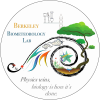Documents
Full list | Available Documents:Real Time Reports | Calibration | Data | Manual | Other | PackingSlip | RMA
| BA | BC | DC | EE | EL | EP | GT | HS | MB | RR | SB | SI | SW | TA | TW | TZ | VR | WP |
Processing Notes Wikis - via BitBucket
Eddy Processing NotesMet Processing Notes
Real Time Reports
| name | last update | size |
|---|---|---|
| Delta SW PAR Comparison 10-2016 | 2017-05-08 | 5714 |
| HMP RH and AirT Comparison 12-2017 | 2017-12-18 | 8860 |
| Mayberry - NDVI (SRS, Planet) | 2017-06-06 | 5886 |
| Mayberry CDOM Data | 2020-01-16 | 1011 |
| Mayberry conductivity comparision - 2020 | 2020-11-03 | 8601 |
| Mayberry Conductivity Comparison | 2017-04-20 | 2810 |
| Mayberry porewater sippers | 2023-05-09 | 13114 |
| MB Eosense CO2 Comparison | 2017-05-10 | 4977 |
| MB miniDOT Comparison | 2017-05-10 | 3782 |
| Picam FWB Rescaling - MB | 2022-02-18 | 9426 |
| Water Level sensor calibration with staff gauge | 2018-04-24 | 10480 |
| ID | Type | Date | file name | Description |
|---|---|---|---|---|
| 26 | Plots | 2013-06-01 | Cospectra_Comparison_Delta.pdf | Plots of cospectra from the Delta sights |
| 102 | Report | MayberryProjectInfo.pdf | DWR prepared brochure for Mayberry Wetland Project | |
| 176 | Report | 2014-09-08 | 2014_MB_AmerifluxReport.pdf | Ameriflux intercomparison from September 8 - October 2, 2008 at Mayberry |
| 206 | Video | 2010-11-17 | https://youtu.be/VV73O5WCr6Y | Timelapse of Mayberry wetland from 2010-11-17 to 2011-08-09 |
| 298 | Video | 2018-08-30 | https://www.youtube.com/watch?v=PLsSODVyQ9o | sub_TIDAL is an audiovisual piece created by algorithmically processed gas exchange data collected over four years at a wetland restoration project on Sherman Island in California’s Delta. Formerly grazed pastures, this developing ecosystem provides critical wildlife habitat for resident and migratory species, and can help reduce pressure on levees critical for the safety of California’s drinking water supply. Additionally, the wetland influences greenhouse gas emissions by storing carbon and releasing methane. To help reveal the invisible forces that structure the developing ecosystem, and to highlight the interdependence between human and natural systems, this project uses Max MSP to translate ecosystem parameters visually (by applying color filters controlled by sensor data to time-lapse imagery) and sonically (by creating melodies using sampled instruments controlled by sensor data). This educational project takes a multi-sensory approach to engage new ways of comprehending local climate dynamics in the context of ecological restoration. This restoration project is managed by the California Department of Water Resources and all data was collected by the Baldocchi Lab at UC Berkeley. |

